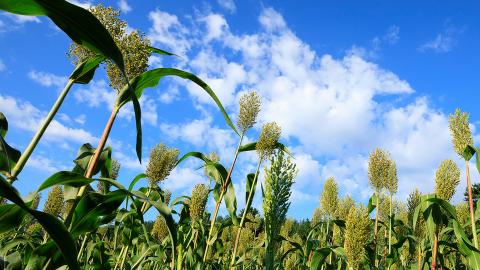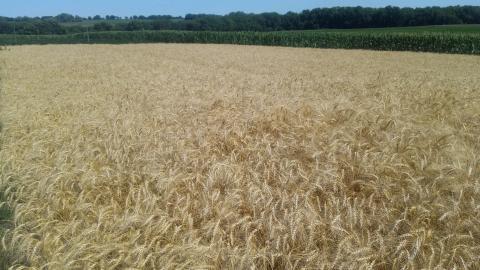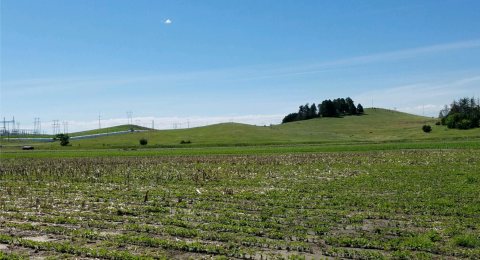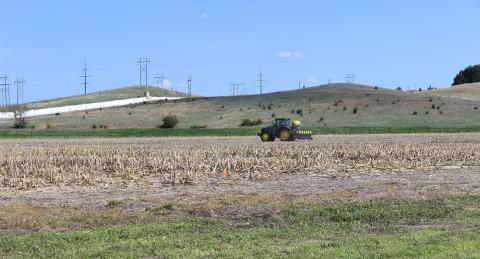Nebraska Team Merges Machine Learning, Plant Genetics to Maximize Sorghum Potential
August 22, 2019
Sorghum is emerging as a star player in the biofuels industry. With its water use efficiency, resistance to heat, and low cost of seed, it could outpace corn, with a little boost from improved genetics. To aid that, a UNL team was recently awarded a $2.7 million grant to work on a rapid, efficient method for characterizing its gene functions.
Gap Growing Between Irrigated, Rainfed Crop Yields
August 13, 2019
A 65-year comparative analysis between U.S. yields of irrigated and rainfed crops has sounded a message to farmers, land managers and policymakers: Mind the gap. Researchers analyzed annual yields of nine crops on a county-by-county basis from 1950 to 2015.
Crop Condition Improves Slightly; Progress Still Behind
July 22, 2019
Crop condition improved slightly for corn and soybean, while crop progress continued to lag previous years in all categories for the week ending July 21. Wheat harvest was 33% complete, well behind the five-year average of 76%.
UNL-TAPS Field Tour this Thursday, June 27
June 19, 2019
View the variable rate irrigation system and the subsurface drip irrigation system used for this year's UNL-TAPS competition at the TAPS Field Tour on Thursday, June 27. There will be plenty of time to talk with contest participants and staff about this year's contest.
USDA: Nebraska Corn, Soybean Planting Nearly Done
June 18, 2019
With 98% of the corn crop and 91% of the soybean crop planted as of Sunday, according to the USDA National Agricultural Statistics Service, Nebraska planting efforts moved down the home stretch.
Hybrid Selection Sets TAPS Contests Up for a Unique Year
May 30, 2019
Competitors in the three divisions of this year's UNL-TAPS contest have selected their seed and seeding rate. Additional research was added this year to look at production functions such as seed selection.
Planting Still Lagging with Corn at 81%, Soybean, 56%
May 28, 2019
With cool, rainy conditions, planting progress was slow last week and remains behind normal, according to the USDA's National Agricultural Statistics Service report for Nebraska. There were just 2.2 days suitable for fieldwork.
USDA NASS: Corn Planting at 46%, Soybean at 20%
May 13, 2019
As of Sunday 46% of the state's corn was planted, up from 35% last week, but well behind the five-year average of 72%. Approximately 20% of soybean had been planted, up from 14% last week, but well behind the average of 32%.




